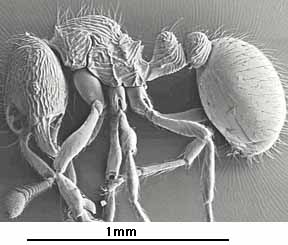
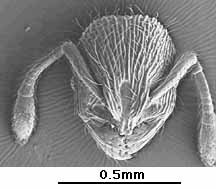
| return to guide introduction | go to genus list |
|
 |
Moderately uniform habitus; antenna 12-segmented with 2-segmented club; distinctive anteriorly projecting clypeus; sculpture coarsely striate or rugose, occasionally with shiny spots. Cryptic ants of forest leaf litter; uncommon.

Diverse habitus; monomorphic or polymorphic, with distinct major caste, but majors rarely seen; antennae with 11 or fewer segments, distinct 2-segmented club; eyes small to absent. Cryptic ants in leaf litter; uncommon.

One species in Costa Rica; small ant very like Solenopsis; 10-segmented antennae with 2-segmented club; pair of clypeal carinae bend and join anteromedially, forming single U-shaped carina on clypeus. Cryptic ant in forest leaf litter; rare.
|
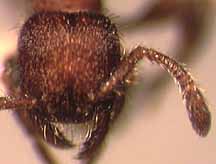 |
Uniform size and habitus; distinctive petiole shape; antennae 12-segmented without distinct club; sculpture sericeous rugose with contrasting shiny gaster, often with short striae radiating onto gaster from postpetiolar insertion. Nest in wet forest leaf litter; uncommon.
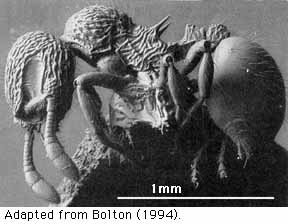
Uniform habitus; deep, sharply-delimited antennal scrobes, surface of scrobe shiny, contrasting with surrounding coarse sculpture of face; 11-segmented antennae with 2-segmented club. Cryptic ants of forest leaf litter; uncommon.

Diverse habitus; 12-segmented antennae with 3-segmented club; clypeus with pair of anteriorly diverging carinae; anteroventral border of pronotum often angulate or toothed, fitting into short groove on undersurface of head. Nest in leaf litter, under epiphytes; rare.
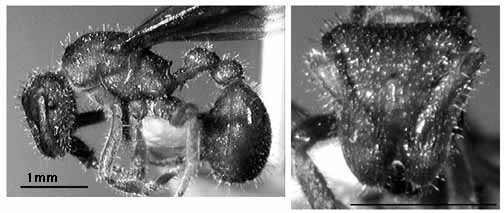
One species in Costa Rica (S. manni); face shield-like, with broad frontal lobes covering deep antennal scrobes; antennae 12-segmented. Forest leaf litter; rare.
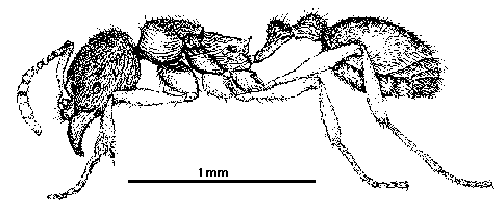
Diverse habitus; eyes small; antennae 12-segmented with somewhat weakly-defined 4-segmented club. Nest in leaf litter and under epiphytes; cryptic ants; rarely encountered.
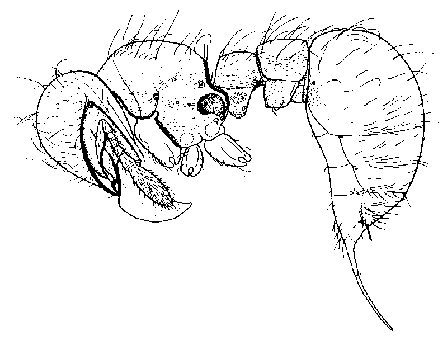
Uniform habitus; broad shield-like face; down-turned mandibles; deep antennal scrobe with eye at apex of scrobe. Small, cryptic ants in leaf litter; rare.

One species in Costa Rica (T. gilva); 11-segmented antennae with 3-segmented club; eyes small; color light yellow; shiny, with no spines or tubercles; abundant pilosity. Cryptic ants in leaf litter, under rocks, in soil; uncommon.

Uniform habitus; monomorphic; small; petiole sessile, barrel-shaped, without distinct dorsal node (Costa Rican species with pair of anterodorsally projecting tubercles on petiole, unlike figure). Arboreal; rare.
Page author:
John T. Longino, The Evergreen State College, Olympia WA 98505 USA. longinoj@evergreen.edu